Getting dressed each morning is a priority for every student and teacher at Davie High School. But when you open your closet, how hard do you think about your outfit for the day? Do you ever wonder if the clothes you’ve chosen to wear might be the object of a rule violation? Due to the dress code, some students stress over whether their outfits would be considered acceptable at school.
Read on to find out how dress code regulations can be controversial, how they can be discriminatory to different groups of students, and alternatives to the current system that Davie County Schools has in place.
What’s the purpose of the dress code at Davie High?
Rule 26 of the DCS Code of Student Conduct outlines the regulations for student dress. The rule explains the purpose of the regulations, the actual requirements, and the disciplinary actions to be taken if a student’s attire does not satisfy the Code.
The school board’s belief on student dress is that “the dress and personal appearance of students are private matters; however, when these matters affect student health, safety and freedom to learn without being disrupted, then they become matters for the board to regulate.”
But what clothing constitutes as “disrupting” to a student’s “health, safety, and freedom to learn?” Later on in the description, the Code of Student Conduct states that “‘appropriate’ is decided by an administrator.” Since there is no absolute definition of what is considered acceptable under the dress code, teachers have the authority to pick and choose which students are punished, leading to bias among the students who are singled out and dress-coded.
Along with being able to discipline only certain students for the dress code, teachers have the authority to determine if certain clothes are distracting—not the actual students whose education is being affected by the distracting clothes. If the purpose of dress restrictions is to prevent a student’s education from being disrupted, students should be able to speak up and tell their teachers if someone’s clothing is preventing them from learning comfortably instead of teachers making that call for the students.
What are the dress code regulations?
The student dress code in its entirety can be found in the DCS Code of Student Conduct, but here are a few of the most controversial restrictions, listed word for word from the Code of Conduct:
- All clothing, skirts, shorts, and dresses are of an appropriate length when falling at mid-thigh or lower.
- Leggings may be worn; however, shirts or skirts worn over leggings must follow dress code length for skirts/shorts.
- At no time may undergarments be visible.
- No hats, bandanas, sunglasses, or head coverings are allowed to be worn in any building.
- A neckline is considered appropriate when it is not revealing or distracting.
The language of the first, second, and fifth rules is directly targeted at girls. Boys do not typically wear short shorts, leggings, or revealing necklines. Ideally, a dress code is fair and equitable when it does not blatantly target a certain gender.
Sometimes, head coverings are worn in a religious context by certain students. The fourth regulation bars students from wearing any kind of head covering, without any clause that alleviates this restriction for religious headwear. This is not to say that teachers would actually make a student take off their religious head covering, but without that clause, the dress code is discriminatory against students of certain religions.
What do Davie students think about the dress code?
The Weekly Talon conducted a survey on Davie students and teachers on the dress code and received 234 responses. The poll revealed that only 30% of students and teachers believe the dress regulations at Davie High School are fair and equitable. In contrast, 51.6% of males believe the dress code is equitable, while only 16.9% of females believe the same. More females responded to this poll than males, possibly because females feel more strongly about the dress code, so there is a bit of a bias with the numbers. Regardless, there is a clear difference between the opinions of each gender.
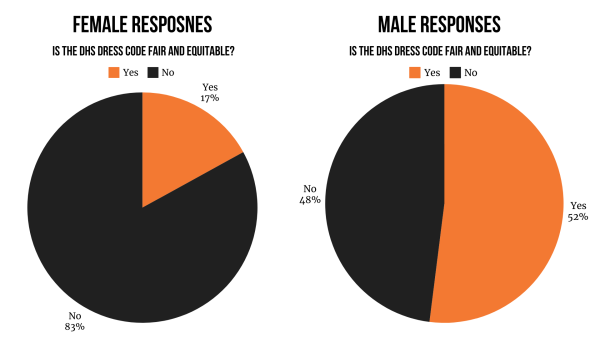
When asked if the dress code targeted a certain group of students, an overwhelming majority of the poll respondents stated that females and feminine-dressing people are at an unfair advantage when it comes to the clothing they wear to school.
Sophomore Emma Green had a lot to say about the topic. “When you look at the dress code portion of the student handbook, a majority of the rules apply only to girls, or they would be the only ones affected,” she says. “[Girls] are told that what we wear is ‘too distracting’ and that the boys will stare at us if we wear something even slightly revealing…The constant rhetoric about having to cover up because WE distract someone is unfair and places the blame on the wrong person.”
Green goes on to talk about how the issue of blaming women for men’s issues is also applicable outside of school. “I read stories of women being stalked or catcalled on the streets. Do you know who is blamed? The woman and her ‘scandalous’ clothing. We don’t need more men like that in this world. By blaming the girls in school for [disrupting clothing] you are letting [men] get away with that behavior and allowing them to become the stalkers, catcallers, and worse.”
Other students—males and females alike—share Green’s sentiment. “Girls are required to wear certain clothing to make sure boys aren’t distracted,” junior Riley Little says. “What we should really be teaching is how to not objectify girls. No matter what a girl is wearing, you should not objectify them.” Sophomore Morgan Creason agrees. “The school rules are formed around the idea of preventing males from being attracted to a female… Males should know better or control that feeling of attraction,” he says. Senior Elizabeth Dorsett states, “Many of the rules are created to ‘prevent distraction,’ however this is poor reasoning and perpetuates gender discrimination.”
Several respondents also noted the amount of stress that falls upon girls due to the dress code. Freshman Ashtyn Andrews states, “You shouldn’t treat girls like the way we dress is a burden to everyone else.” She’s right, girls should not have to worry about pleasing others with the way they dress. Rose Marion, a junior says, “When coming to school I’m more worried about if I’m going to be dress-coded for something that I missed getting ready in the morning rather than the test that I have in third period.” It’s unfortunate that students have to endure so much anxiety due to a simple school rule.
Students have plenty to say about their experiences with being punished unfairly because of the dress code. Sophomore Alexia Medina received one of the stricter punishments for being out of code. “I got dress-coded for wearing a shirt with leggings and was sent to AID for a day,” Medina says. “I got to the point where I was being dress-coded at least twice a week by the same teacher, so I had to get my mom involved and she handled the issue.”
Emma Light, a sophomore, has also been humiliated because of what she wore to school. “A teacher made me wear my gym uniform under and over clothes that I got dress coded for,” she says. “She grabbed a ruler and studied my leg for a good 2 minutes in front of someone else. It was upsetting.” No student should have to go through either what these girls went through. Yes, Emma, it is upsetting that members of our student body are treated so harshly because of a simple school rule.
When a student is dress coded, they are typically taken out of class and asked to change their clothes. Angela Johnson, a sophomore, talks about a time she was dress coded and ended up leaving school. “I wore leggings and I was asked to change into my gym clothes and I refused to change so I went home,” she says. School is to be about education, so why prevent learning from happening by pulling a student out of class and even going as far as to send them home from school? Junior Ethan Frye puts it simply: “Maybe instead of punishing people for wearing what makes them happy, y’all should worry more about our education and less about our fashion.”
Sophomore Trey Estep brought up a unique point about the “no headwear” rule. “The rules on do-rags and bandanas are targeting the black community because they aren’t allowed to wear them even for comfort. I have a classmate that gets told to take his do-rag off every morning and that is more distracting than [sic] the do-rag itself,” Estep says.
Along with being discriminatory towards students of certain religions, rules prohibiting headwear also targets the black community. Females and males with Afro-textured hair sometimes wear headwraps or do-rags, respectively, as a way of keeping their hair healthy and as a fashion choice. Preventing black students from being able to express themselves is a major problem with the school dress code.
Even with a majority of students in agreement that the dress code is discriminatory, some students do not believe that this is the case. Freshman Aidan Davis says, “Some people might say that girls are targeted, but in our society, boys and girls wear completely different things. Girls just have more rules because there are several things that girls wear that are inappropriate to wear at school.”
Drew Brown, a sophomore, states, “It is mostly equal, sometimes females do get the short stick, however, it is fair.” Brown also shared with us an experience he had getting dress-coded because of very short shorts. To wrap up his statement, he says, “[If] someone is walking around in shorts that look like underwear, then yes, [people] are going to be distracted.”
What do Davie teachers think about the dress code?
Interestingly, of the 21 teachers who responded to the survey, two-thirds believe the dress code at Davie is not fair for students. Teachers are responsible for enforcing the code, so if some do not even believe it is fair, this could indicate significant problems with the dress code. Even so, this poll may not reflect the entire staff’s views as only a small proportion of teachers participated.
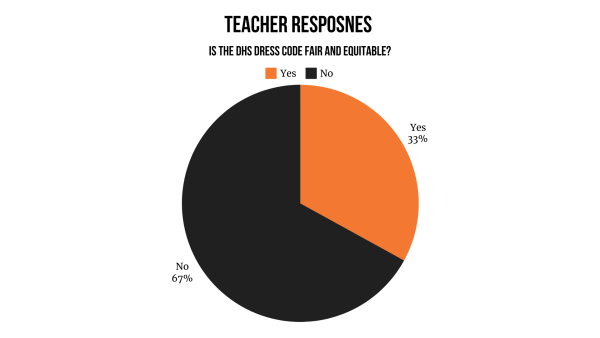
In response to the survey, English teacher Lynn Wisecarver shared a unique experience where she was actually dress coded as a teacher. “An AP sent me home because he thought my shorts were too short,” she says. Wisecarver also believes that the dress code does unfairly discriminate against females. “Girls are targeted and made to feel that a boy’s comfort is more important than a girl’s education. The dress code totally objectives [sic] them and perpetuates our rape culture.” When asked about what changes could be made to make the dress code at Davie fairer, Wisecarver responded, “Don’t have a dress code. It is totally antiquated.”
Several teachers share the opinion that Davie’s clothing regulations are fair, but they are not fairly enforced. Mrs. Patton, a math teacher, says, “I don’t think changes are needed for the code, but maybe changes are needed for the enforcement of the code. For example, some teachers are more lenient with hats—boys just get told to take them off but don’t get sent to the office.” She continues to explain some ways in which teachers could be fairer with dress code enforcement. “Usually, the girls are just made to change… but that incident is flagged and they are written up after. Maybe boys’ hat offenses could be flagged by teachers in Educator’s Handbook to keep up with those as well… to help make things more equitable across genders.”
How can the dress code be improved?
Across the country, school districts have begun to adapt to more relaxed and gender-neutral clothing regulations. The Oregon NOW Model Student Dress Code, published in 2016, is a fantastic example of how dress codes can be adapted to promote education without discriminating against certain students. This ruleset seeks to promote education and a positive environment in schools by requiring “minimum safe attire.”
Here is a short overview of the Oregon NOW Dress Code, taken from their website:
(a) Students must wear clothing including both a shirt with pants or skirt, or the equivalent (for example dresses, leggings, or shorts) and shoes.
(b) Shirts and dresses must have fabric in the front and on the sides (under the arms).
(c) Clothing must cover undergarments (waistbands and straps excluded).
(d) Fabric covering breasts, genitals, and buttocks must be opaque.
(e) Hats and other headwear must allow the face to be visible to staff, and not interfere with the line of sight of any student or staff. Hoodies must allow the face and ears to be visible to school staff.
(f) Clothing must be suitable for all scheduled classroom activities including physical education, science labs, woodshop, and other activities where unique hazards exist.
(g) Specialized courses may require specialized attire, such as sports uniforms or safety gear.
Davie County Schools should have no issue with changing its dress requirements to those of the Model Student Dress Code. The DCS Code of Conduct emphasizes the purpose of the dress code is to “protect student health, safety, and freedom to learn without being disrupted,” but do the current regulations accomplish this goal? If enforcement of the code requires the disruption of a student’s education, then is the policy effectively serving its purpose?
With The Weekly Talon’s poll, it is evident that the education of students is not satisfied by the current dress code. In order to promote the maximum quality of education in its schools, the Davie County school system should seriously consider updating its current dress code to one with a more relaxed approach to student dress.
Special thanks to Ashtyn Andrews, Drew Brown, Morgan Creason, Aidan Davis, Elizabeth Dorsett, Trey Estep, Ethan Frye, Emma Green, Angela Johnson, Emma Light, Riley Little, Alexia Medina, Rose Marion, Mrs. Patton, and Mrs. Wisecarver.

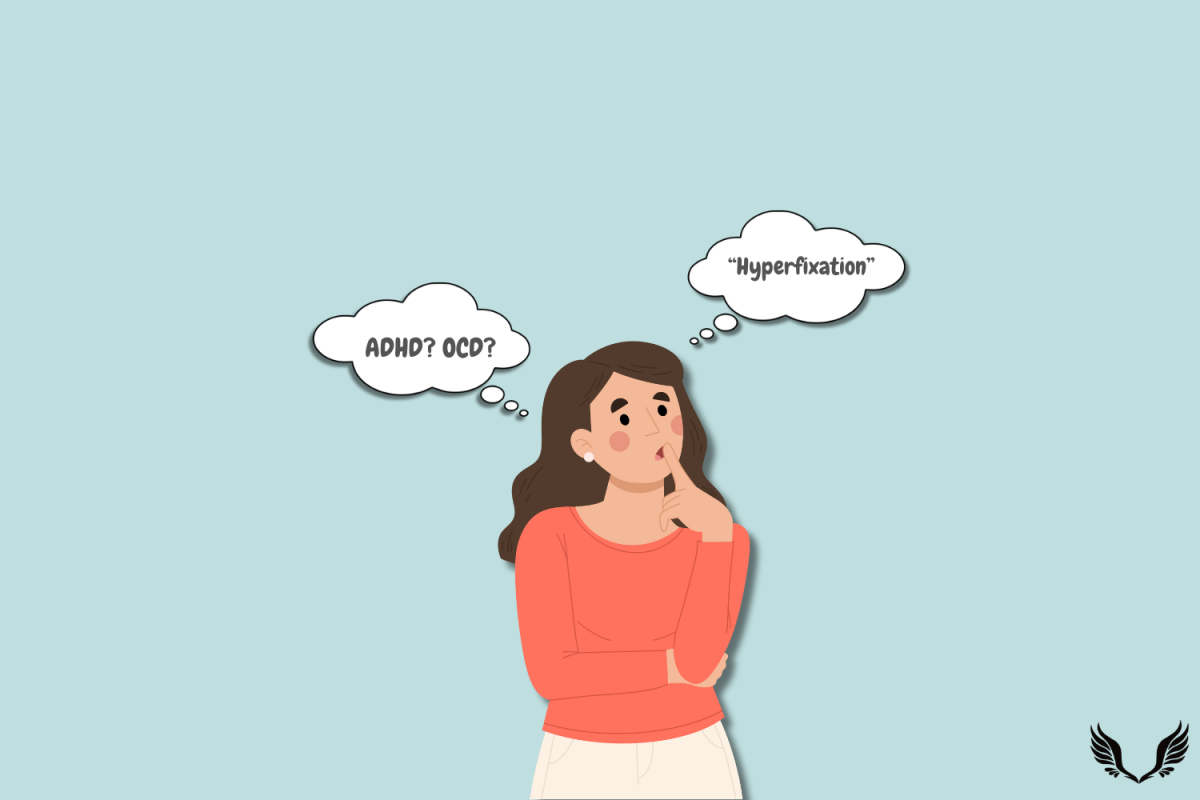
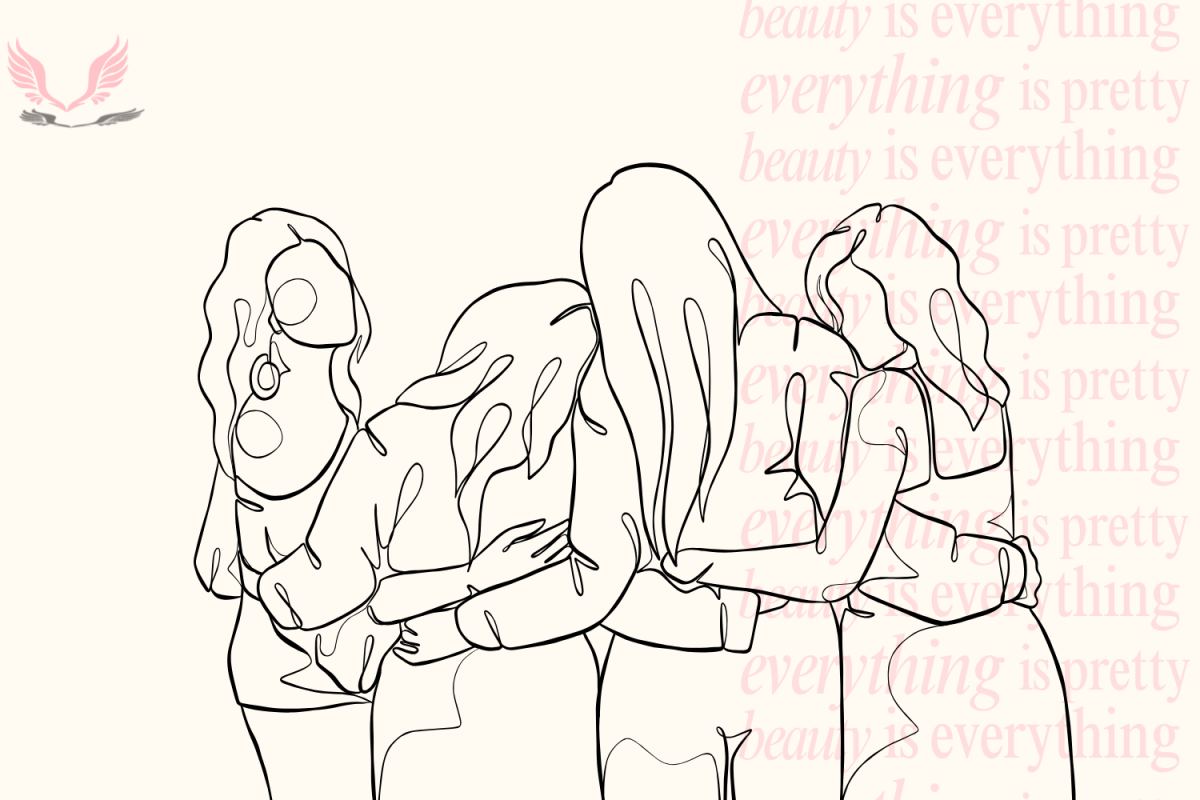



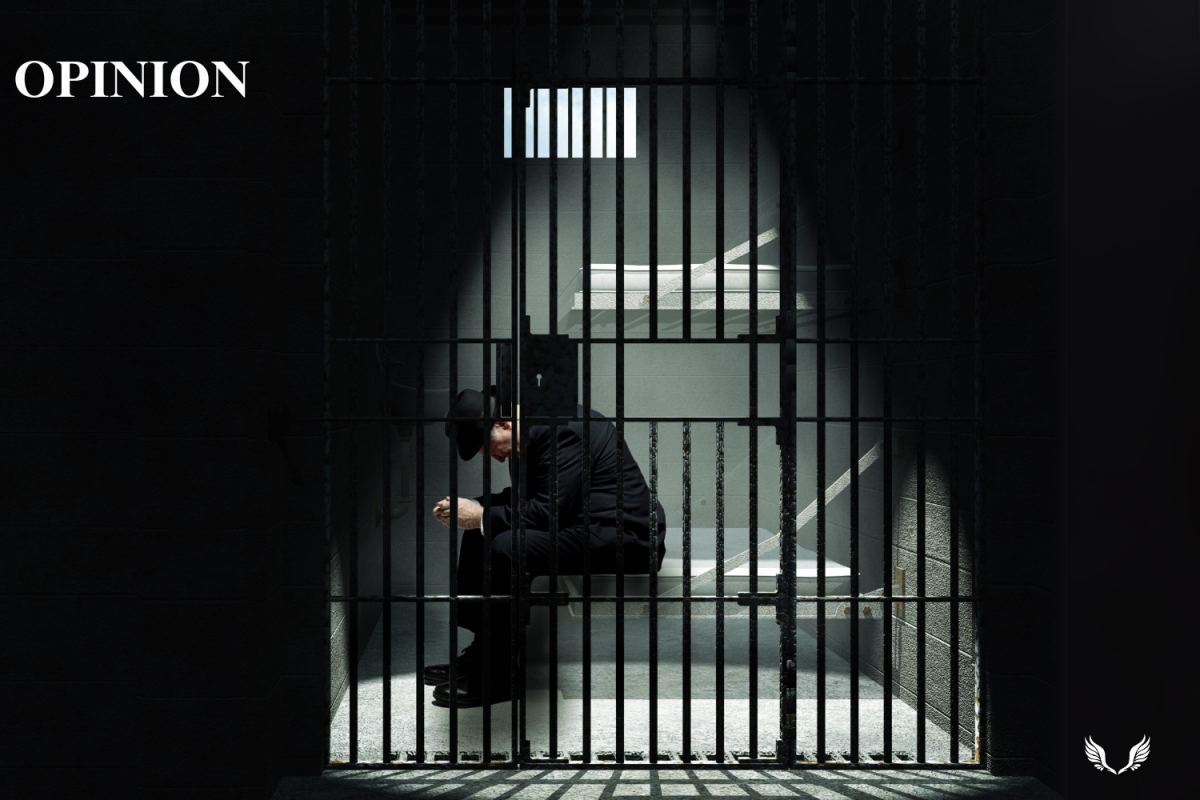



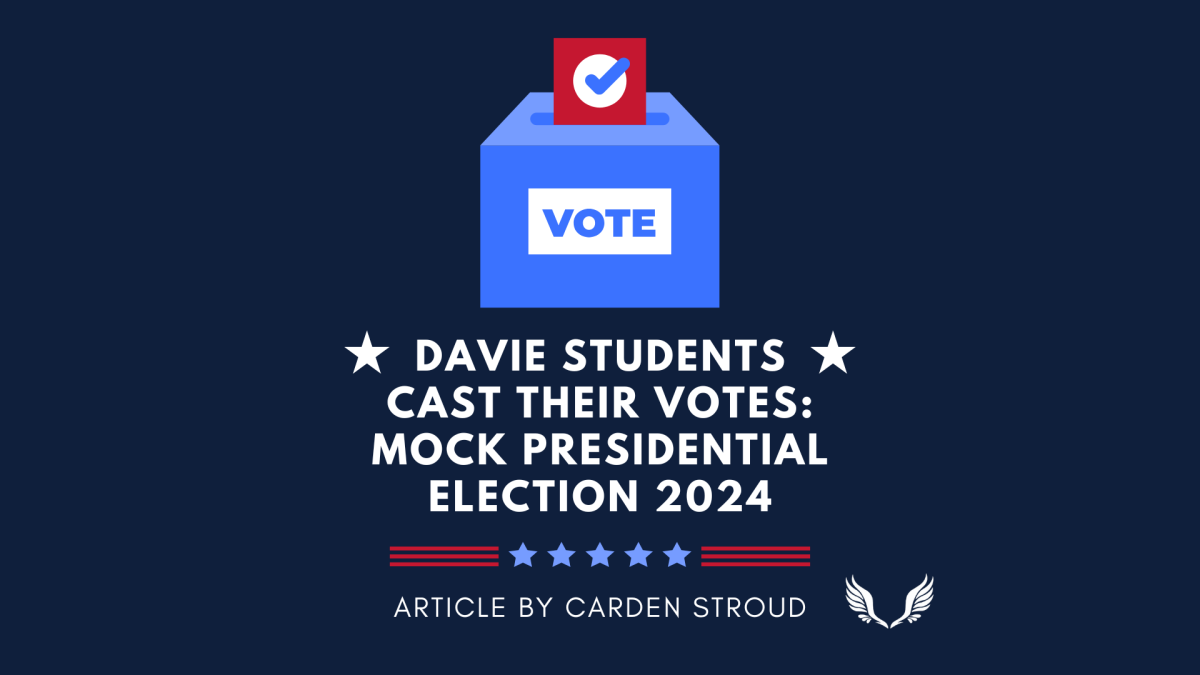
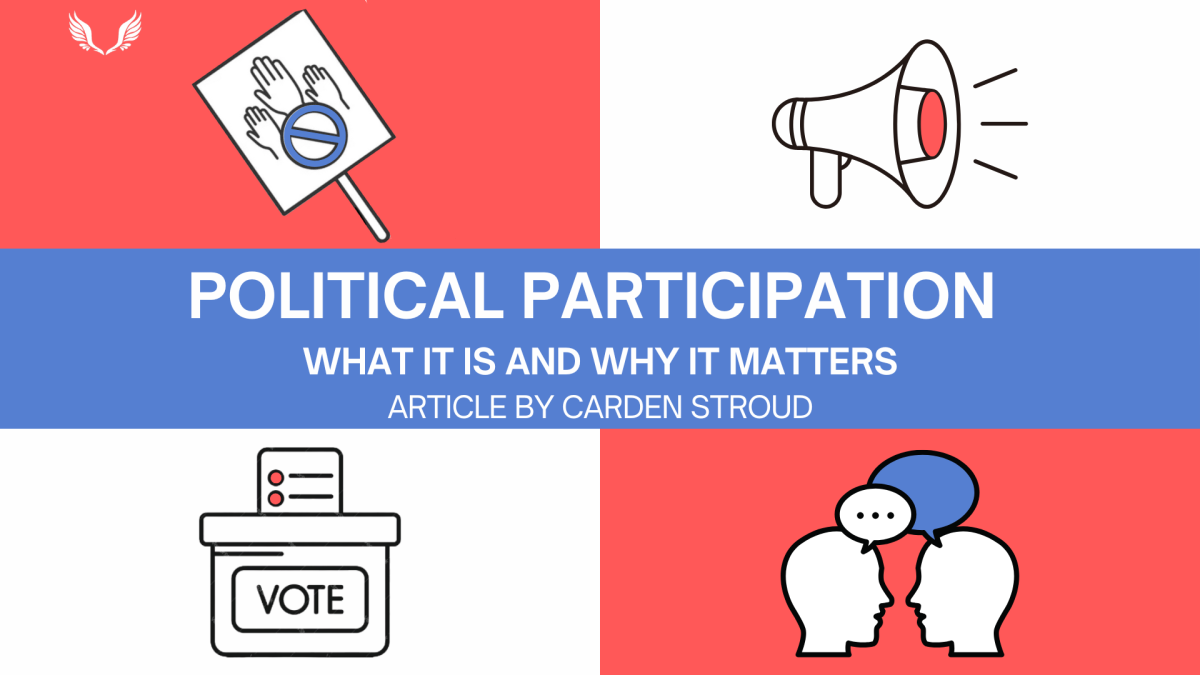

Nellie Colon • Aug 30, 2021 at 10:46 am
Great article!